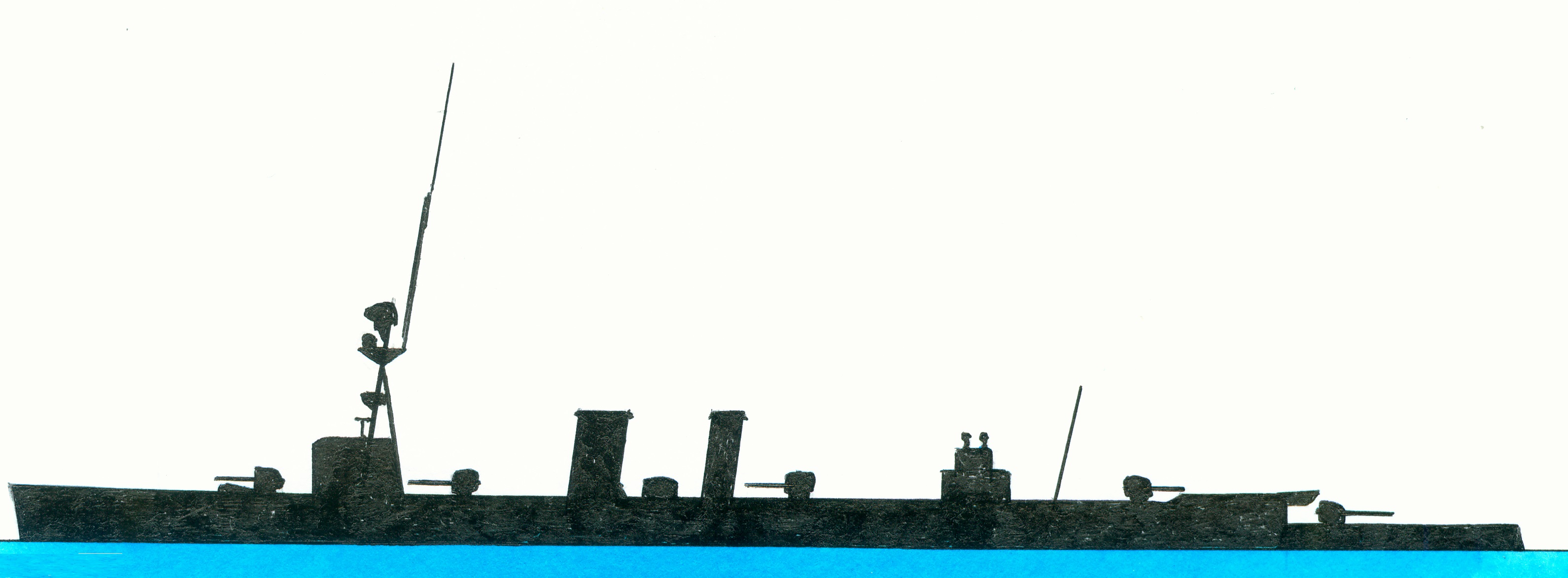Caledon-class
Danae-class
Building ordered under the War Emergency Program in March 1918, laid down by Fairfield Shipbuilding and Engineering Company, Govan, Scotland on 8 July 1918, launched on 24 September 1919, completed by Chatham Dockyard on 2 June 1922, aded to the reserve in January 1945, finally sold to be broken up on 5 April 1946 and arrived for that purpose at Arnott Young, Troon, Scotland on 5 May 1946. Fitted out with a flying-off platform a wheeled aircraft.
Part of the Danae-class light cruisers, Delhi sub-class (with a raised bow), consisting of the completed Danae, Dragon, Dauntless, Delhi, Dunedin, Durban, Despatch and Diomede and the cancelled Daedalus, Daring, Desperate and Dryad, preceded by the C-class and succeeded by the Emerald-class. An improved C-class design including lengthening of the hull to make it possible to add an extra 15,2cm/6”gun situated between the bridge and the forefunnel.
General technical class specifications
Displacement 4.970 (standard)-5.925 (full load) tons and as dimensions 135,6 (between perpendiculars)-144,0 (over all) x 14,2 x 4,4 metres. The machinery consisted of 6 Yarrow water tube boilers and 2 Brown Curtiss geared steam turbines to supply 40.000 shp and with the 2 shafts allowing a speed of 27 (full load)-29 knots. Fuel oil bunker capacity 1.050 tons. Crew numbered 460 men. Original class armament consisted of 6x1-15,2cm/6” L/45 Mark XII guns, 2x1-7,62cm/3” Mk II anti aircraft guns, 2x1-4cm/2pd quick firing anti aircraft guns and 4x3-53,3cm/21” torpedo tubes. The armour consisted of a 3,8cm/1.5”-5,7cm/2.25” (forward)-7,6cm/3” (amidships)-5,1cm/2”-5,7cm/2.25” (aft) thick main belt, a 2,5cm/1” thick upper deck above the machinery, the steering gear was above protected by the 1” thick main deck and the guns by 1” thick gunshields.


